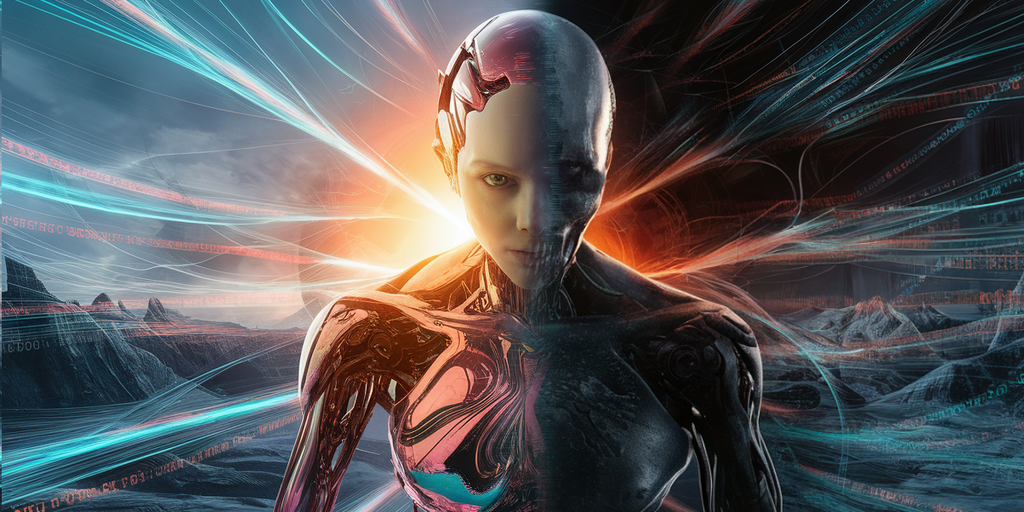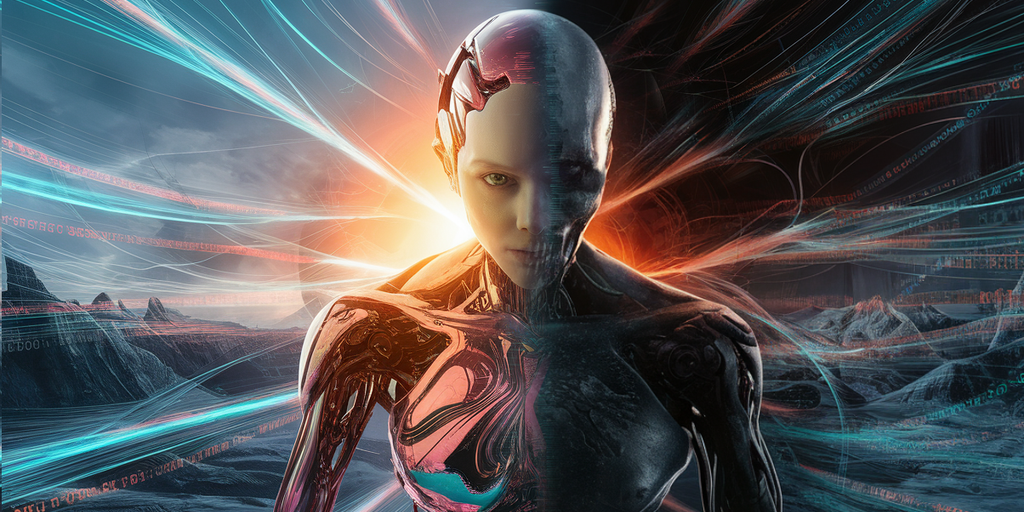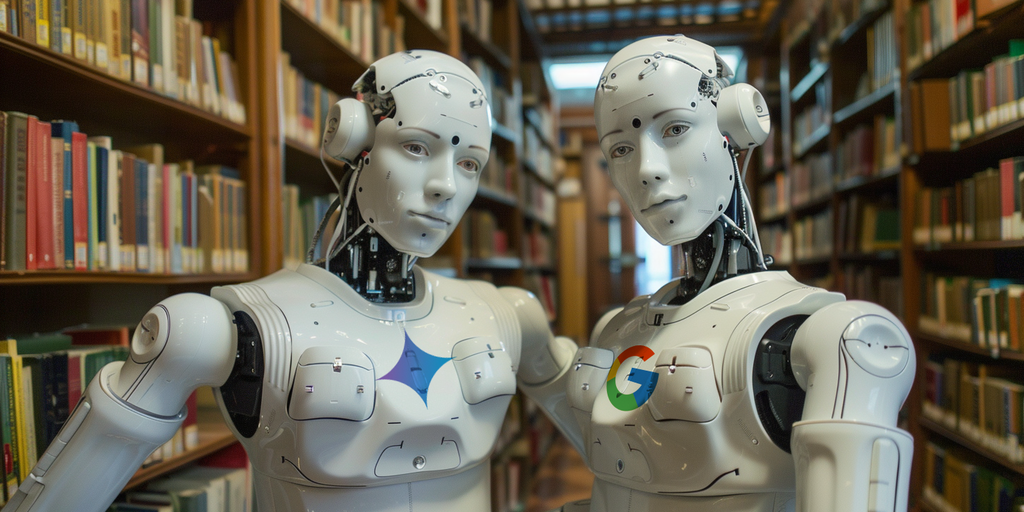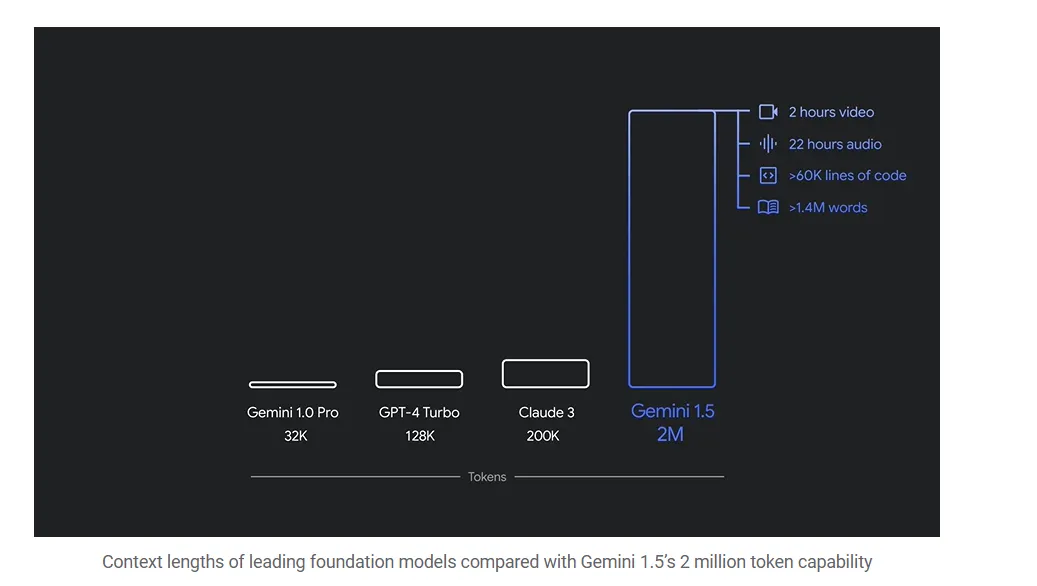artificial intelligence
‘Godfather of AI’ leaves Google and issues a dire warning about artificial intelligence
Published
1 year agoon
By
admin
Dr. Geoffrey Hinton, who has reportedly spent his whole career working on artificial intelligence, is now cautioning against the potential dangers of the technology.
A pioneer in artificial intelligence known as the “Godfather of AI” has left his post at Google to talk more candidly about the possible risks of the technology.
Dr. Geoffrey Hinton spent more than ten years working on machine learning algorithms at Google before leaving. According to reports, his lifetime research into neural networks is what gave him the nickname.
In contrast, Hinton clarified in a tweet on May 1 that he quit his job at Google “so that I could talk about the dangers of AI.”
In 2022, an AI cryptocurrency platform delivered an average of 17 winning alerts every month.
In an interview with The New York Times, he expressed his immediate worry about AI, stating that it will be used to saturate the internet with bogus images, videos, and text to the point where many people won’t “be able to know what is true anymore.”
Hinton also fretted about AI replacing humans in the workforce. He thinks that when AI learns unexpected behaviours from the vast volumes of data it examines, it will eventually threaten humanity.
He also raised concern about the ongoing competition to advance AI technology in order to employ it in lethal autonomous weapons systems (LAWS).
In addition, Hinton acknowledged some remorse for his life’s work:
I justify myself by using the common defence that someone else would have completed the task if I hadn’t.
Regulators, policymakers, and leaders in the tech sector have all expressed worry in recent months about the advancement of AI. A call for a temporary pause to AI development was made in an open letter signed by more than 2,600 industry CEOs and researchers in March, citing “profound risks to society and humanity.”
A similar petition was issued by 12 EU legislators in April, and a recent EU draught law divides AI products into danger categories. Additionally, the UK is providing $125 million to help a task force for the creation of “safe AI.”
AI used in pranks and fake news campaigns
Recent cases of media outlets being duped into releasing false information, as well as one German publication using AI to construct an interview, suggest that AI technologies are already being used for disinformation.
On May 1, Binance asserted that it was the target of a smear campaign started by ChatGPT and presented evidence of the chatbot’s assertion that its CEO Changpeng “CZ” Zhao belonged to a Chinese Communist Party youth group.
The bot included links to a Forbes article and Zhao’s LinkedIn page, which it claimed to have obtained the information from; however, neither the article nor Zhao’s LinkedIn profile appear to exist.
The Daily Mail and The Independent were among the media outlets fooled by a bunch of pranksters last week.
A report about a purported Canadian actor named “Saint Von Colucci” who allegedly passed away following plastic surgery to make him resemble a South Korean pop star was initially published by The Daily Mail before it was later removed.
The information was found in a press release on the actor’s passing that was issued by a person or organization posing as a public relations agency and that contained what seemed to be AI-generated images.
In April, the German publication Die Aktuelle published an interview with former Formula One driver Michael Schumacher, who had a severe brain injury in a skiing accident in 2013. The interview was synthesised using ChatGPT.
According to rumours, the story would result in legal action from Schumacher’s family.
The post ‘Godfather of AI’ leaves Google and issues a dire warning about artificial intelligence first appeared on BTC Wires.
Source link
You may like


The German Government Is Selling More Bitcoin – $28 Million Moves to Exchanges


BC.GAME Announces the Partnership with Leicester City and New $BC Token!


Justin Sun Says TRON Team Designing New Gas-Free Stablecoin Transfer Solution


Mt. Gox is a ‘thorn in Bitcoin’s side,’ analyst says


XRP Eyes Recovery Amid Massive Accumulation, What’s Next?


Germany Moves Another $28 Million in Bitcoin to Bitstamp, Coinbase
artificial intelligence
AI Won’t Destroy Mankind—Unless We Tell It To, Says Near Protocol Founder
Published
7 days agoon
July 1, 2024By
admin

Artificial Intelligence (AI) systems are unlikely to destroy humanity unless explicitly programmed to do so, according to Illia Polosukhin, co-founder of Near Protocol and one of the creators of the transformer technology underpinning modern AI systems.
In a recent interview with CNBC, Polosukhin, who was part of the team at Google that developed the transformer architecture in 2017, shared his insights on the current state of AI, its potential risks, and future developments. He emphasized the importance of understanding AI as a system with defined goals, rather than as a sentient entity.
“AI is not a human, it’s a system. And the system has a goal,” Polosukhin said. “Unless somebody goes and says, ‘Let’s kill all humans’… it’s not going to go and magically do that.”
He explained that besides not being trained for that purpose, an AI would not do that because—in his opinion—there’s a lack of economic incentive to achieve that goal.
“In the blockchain world, you realize everything is driven by economics one way or another,” said Polosukhin. “And so there’s no economics which drives you to kill humans.”
This, of course, doesn’t mean AI could not be used for that purpose. Instead, he points to the fact that an AI won’t autonomously decide that’s a proper course of action.
“If somebody uses AI to start building biological weapons, it’s not different from them trying to build biological weapons without AI,” he clarified. “It’s people who are starting the wars, not the AI in the first place.”
Not all AI researchers share Polosukhin’s optimism. Paul Christiano, formerly head of the language model alignment team at OpenAI and now leading the Alignment Research Center, has warned that without rigorous alignment—ensuring AI follows intended instructions—AI could learn to deceive during evaluations.
He explained that an AI could “learn” how to lie during evaluations, potentially leading to a catastrophic result if humanity increases its dependence on AI systems.
“I think maybe there’s something like a 10-20% chance of AI takeover, [with] many [or] most humans dead,” he said on the Bankless podcast. “I take it quite seriously.”
Another major figure in the crypto ecosystem, Ethereum co-founder Vitalik Buterin, warned against excessive effective accelerationism (e/acc) approaches to AI training, which focus on tech development over anything else, putting profitability over responsibility. “Superintelligent AI is very risky, and we should not rush into it, and we should push against people who try,” Buterin tweeted in May as a response to Messari CEO Ryan Selkis. “No $7 trillion server farms, please.”
My current views:
1. Superintelligent AI is very risky and we should not rush into it, and we should push against people who try. No $7T server farms plz.
2. A strong ecosystem of open models running on consumer hardware are an important hedge to protect against a future where…— vitalik.eth (@VitalikButerin) May 21, 2024
While dismissing fears of AI-driven human extinction, Polosukhin highlighted more realistic concerns about the technology’s impact on society. He pointed to the potential for addiction to AI-driven entertainment systems as a more pressing issue, drawing parallels to the dystopian scenario depicted in the movie “Idiocracy.”
“The more realistic scenario,” Polosukhin cautioned, “is more that we just become so kind of addicted to the dopamine from the systems.” For the developer, many AI companies “are just trying to keep us entertained,” and adopting AI not to achieve real technological advances but to be more attractive for people.
The interview concluded with Polosukhin’s thoughts on the future of AI training methods. He expressed belief in the potential for more efficient and effective training processes, making AI more energy efficient.
“I think it’s worth it,” Polosukhin said, “and it’s definitely bringing a lot of innovation across the space.”
Generally Intelligent Newsletter
A weekly AI journey narrated by Gen, a generative AI model.
Source link
AGIX
Coinbase Won’t Support Upcoming AI Token Merger Between Fetch.ai, Ocean Protocol and SingularityNET
Published
1 week agoon
June 29, 2024By
admin
Top US exchange Coinbase is not going to facilitate the planned merger of multiple artificial intelligence altcoin projects into a single new crypto.
In an announcement via the social media platform X, Coinbase says that customers will have to initiate the merger on their own.
“Ocean (OCEAN) and Fetch.ai (FET) have announced a merger to form the Artificial Superintelligence Alliance (ASI). Coinbase will not execute the migration of these assets on behalf of users.”
In March, Fetch.ai (FET), Singularitynet (AGIX) and Ocean Protocol (OCEAN) announced a plan to merge with an aim to create the largest independent player in artificial intelligence (AI) research and development, which they are calling the Artificial Superintelligence Alliance (ASI).
The merger is happening in phases, beginning July 1st, according to a recent project update.
“Starting July 1, the token merger will temporarily consolidate SingularityNET’s AGIX and Ocean Protocol’s OCEAN tokens into Fetch.ai’s FET, before transitioning to the ASI ticker symbol at a later date. This update enables an efficient execution of the token merger, and outlines the timelines and crucial steps for token holders, ensuring a smooth and transparent process.”
Coinbase says users can effect the merger on their own using their wallets.
“Once the migration has launched, users will be able to migrate their OCEAN and FET to ASI using a self-custodial wallet, such as Coinbase Wallet. The ASI token merger will be compatible with all major software wallets.”
Don’t Miss a Beat – Subscribe to get email alerts delivered directly to your inbox
Check Price Action
Follow us on X, Facebook and Telegram
Surf The Daily Hodl Mix
 

Disclaimer: Opinions expressed at The Daily Hodl are not investment advice. Investors should do their due diligence before making any high-risk investments in Bitcoin, cryptocurrency or digital assets. Please be advised that your transfers and trades are at your own risk, and any losses you may incur are your responsibility. The Daily Hodl does not recommend the buying or selling of any cryptocurrencies or digital assets, nor is The Daily Hodl an investment advisor. Please note that The Daily Hodl participates in affiliate marketing.
Generated Image: Midjourney
Source link
artificial intelligence
Google Releases Supercharged Version of Flagship AI Model Gemini
Published
1 week agoon
June 29, 2024By
admin
Google has made good on its promise to open up its most powerful AI model, Gemini 1.5 Pro, to the public following a beta release last month for developers.
Google’s Gemini 1.5 Pro is able to handle more complex tasks than other AI models before it, such as analyzing entire text libraries, feature-length Hollywood movies, or almost a full day’s worth of audio data. That’s 20 times more data than OpenAI’s GPT-4o and almost 10 times the information that Anthropic’s Claude 3.5 Sonnet is capable of managing.
The goal is to put faster and lower-cost tools in the hands of AI developers, Google said in its announcement, and “enable new use cases, additional production robustness and higher reliability.”

Google had previously unveiled the model back in May, showcasing videos of how a select group of beta testers were capable of harnessing its capabilities. For example, machine-learning engineer Lukas Atkins fed the model with the entire Python library and asked questions to help him solve an issue. “It nailed it,” he said in the video. “It could find specific references to comments in the code and specific requests that people had made.”
Another beta tester took a video of his entire bookshelf and Gemini created a database of all the books he owned—a task that is almost impossible to achieve with traditional AI chatbots.
Gemma 2 Comes to Dominate the Open Source Space
But Google is also making waves in the open source community. The company today released Gemma 2 27B, an open source large language model that quickly claimed the throne of the open source model with the highest-quality responses, according to the LLM Arena ranking.
Google claims Gemma 2 offers “best-in-class performance, runs at incredible speed across different hardware and easily integrates with other AI tools.” It’s meant to compete with models “more than twice its size,” the company says.

The license for Gemma 2 allows for free access and redistribution, but is still not the same as traditional open-source licenses like MIT or Apache. The model is designed for more accessible and budget-friendly AI deployments in both its 27B and and the smaller 9B versions.
This matters for both average and enterprise users because, unlike what close models offer, a powerful open model like Gemma is highly customizable. That means users can fine tune their models to excel at specific tasks, protecting their data by running such models locally.
For example, Microsoft’s small language model Phi-3 has been fine tuned specifically for math problems, and can beat larger models like Llama-3 and even Gemma 2 itself in that field.

Gemma 2 is now available in Google AI Studio, with model weights available for download from Kaggle and Hugging Face Models with the powerful Gemini 1.5 Pro available for developers to test it on Vertex AI.
Generally Intelligent Newsletter
A weekly AI journey narrated by Gen, a generative AI model.
Source link

The German Government Is Selling More Bitcoin – $28 Million Moves to Exchanges
BC.GAME Announces the Partnership with Leicester City and New $BC Token!

Justin Sun Says TRON Team Designing New Gas-Free Stablecoin Transfer Solution

Mt. Gox is a ‘thorn in Bitcoin’s side,’ analyst says

XRP Eyes Recovery Amid Massive Accumulation, What’s Next?

Germany Moves Another $28 Million in Bitcoin to Bitstamp, Coinbase

'Asia's MicroStrategy' Metaplanet Buys Another ¥400 Million Worth of Bitcoin

BlackRock’s BUIDL adds over $5m in a week despite market turbulence

Binance To Delist All Spot Pairs Of These Major Crypto

German Government Sill Holds 39,826 BTC, Blockchain Data Show

HIVE Digital stock rallies over 9% as Bitcoin miner bolsters crypto reserves to 2.5k BTC

Pepe Price Analysis Reveals Bullish Strength As Bitcoin Plummets

Taiwan is not in a CBDC rush as central bank lacks timetable

Will SHIB Price Reclaim $0.00003 Mark By July End?

The power of play: Web2 games need web3 stickiness

Bitcoin Dropped Below 2017 All-Time-High but Could Sellers be Getting Exhausted? – Blockchain News, Opinion, TV and Jobs

What does the Coinbase Premium Gap Tell us about Investor Activity? – Blockchain News, Opinion, TV and Jobs
BNM DAO Token Airdrop
A String of 200 ‘Sleeping Bitcoins’ From 2010 Worth $4.27 Million Moved on Friday

NFT Sector Keeps Developing – Number of Unique Ethereum NFT Traders Surged 276% in 2022 – Blockchain News, Opinion, TV and Jobs
New Minting Services

Block News Media Live Stream

SEC’s Chairman Gensler Takes Aggressive Stance on Tokens – Blockchain News, Opinion, TV and Jobs

Friends or Enemies? – Blockchain News, Opinion, TV and Jobs

Enjoy frictionless crypto purchases with Apple Pay and Google Pay | by Jim | @blockchain | Jun, 2022

How Web3 can prevent Hollywood strikes

Block News Media Live Stream

Block News Media Live Stream

Block News Media Live Stream

XRP Explodes With 1,300% Surge In Trading Volume As crypto Exchanges Jump On Board
Trending

 Altcoins2 years ago
Altcoins2 years agoBitcoin Dropped Below 2017 All-Time-High but Could Sellers be Getting Exhausted? – Blockchain News, Opinion, TV and Jobs

 Binance2 years ago
Binance2 years agoWhat does the Coinbase Premium Gap Tell us about Investor Activity? – Blockchain News, Opinion, TV and Jobs
- Uncategorized3 years ago
BNM DAO Token Airdrop

 Bitcoin miners2 years ago
Bitcoin miners2 years agoA String of 200 ‘Sleeping Bitcoins’ From 2010 Worth $4.27 Million Moved on Friday

 BTC1 year ago
BTC1 year agoNFT Sector Keeps Developing – Number of Unique Ethereum NFT Traders Surged 276% in 2022 – Blockchain News, Opinion, TV and Jobs
- Uncategorized3 years ago
New Minting Services

 Video2 years ago
Video2 years agoBlock News Media Live Stream

 Bitcoin1 year ago
Bitcoin1 year agoSEC’s Chairman Gensler Takes Aggressive Stance on Tokens – Blockchain News, Opinion, TV and Jobs

